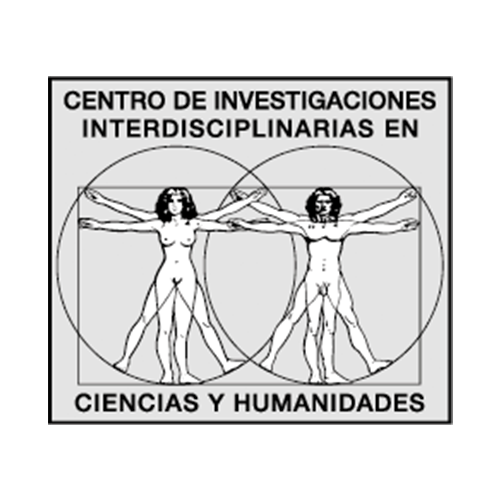TiO2 as nanocarrier of antibiotics (quinolones): A molecular docking assay
Main Article Content
Abstract
A QSAR study was carried out, by considering common quinolone to develop new chemical structures with possible antibacterial action. Furthermore, it has been performed a docking assay to get insight into the molecular interactions of the studied molecules herein with the biological target Staphylococcus aureus (S. aureus). On the other hand, a TiO2 cluster was used as a nanocarrier model and was coupled to quinolones through a molecular docking assay. All the molecules were optimized using the density functional theory (DFT), with the functional M06L and a basis set 6-311+G(d,p); the molecular docking assay between isolated quinolone and the TiO2-quinolone complex with DNA gyrase-topoisomerase IV (like biological target), was performed with Molegro Virtual Docker Software. The results show that the designed molecules present MIC (minimum inhibitory concentrations) values better than those of commercial drugs, especially when isatine and azole substituents were added. The molecular coupling of the designed structures mimics the linkage mechanism with the biological target, as has been reported in the literature. The addition of TiO2 as a nanocarrier confers a better interaction than free drugs or free molecules due to the many target-ligand interactions. Finally, we can conclude that four potential antibiotics were designed, showing lower MIC values. Likewise, the TiO2 nanocarrier promotes a better molecular coupling with the biological target, being our molecules a solid proposal to be synthesized and in vitro tested.
Downloads
Article Details

Mundo Nano. Revista Interdisciplinaria en Nanociencias y Nanotecnología por Universidad Nacional Autónoma de México se distribuye bajo una Licencia Creative Commons Atribución-NoComercial 4.0 Internacional.
Basada en una obra en http://www.mundonano.unam.mx.
References
Alos, Juan-Ignacio. 2009. Quinolonas. Enfermedades infecciosas y microbiología clínica, 27(5): 290-297. DOI: https://doi.org/10.1016/j.eimc.2009.03.001
Andersson, Monique I. y Alasdair P MacGowan. 2003. Development of the quinolones. Journal of Antimicrobial Chemotherapy, 51 (suppl_1): 1-11. https://doi.org/10.1093/jac/dkg212 DOI: https://doi.org/10.1093/jac/dkg212
Bitencourt-Ferreira, Gabriela y Walter Filgueira de Azevedo. 2019. Molegro virtual docker for docking. Docking Screens for Drug Discovery, 149-167. Springer Nature Experiments. DOI: https://doi.org/10.1007/978-1-4939-9752-7_10
Campos, S., Alfonso E., Martínez Enríquez, María E., Mendoza Patiño, N. 2008. Quinolonas. Revista de la Facultad de Medicina UNAM, 51(4): 173-177.
Cervantes-García, Estrella, Rafael García-González y Paz María Salazar-Schettino. 2014. Características generales del Staphylococcus aureus. Revista Mexicana de Patología Clínica y Medicina de Laboratorio, 61(1): 28-40.
Cué Brugueras, Manuel, Moisés Morejón García y Rosa Salup Díaz. 2005. Actualidad de las quinolonas. Revista Cubana de Farmacia, 39(1): 1-1.
De Azevedo, Walter Filgueira. 2019. Docking screens for drug discovery. Springer. DOI: https://doi.org/10.1007/978-1-4939-9752-7
Hoogkamp-Korstanje, J. A. 1997. In vitro activities of ciprofloxacin, levofloxacin, lomefloxacin, ofloxacin, pefloxacin, sparfloxacin and trovafloxacin against gram-positive and gram-negative pathogens from respiratory tract infections. The Journal of antimicrobial chemotherapy, 40(3): 427-431. https://doi.org/10.1093/jac/40.3.427 DOI: https://doi.org/10.1093/jac/40.3.427
Jacoby, George A. 2005. Mechanisms of resistance to quinolones. Clinical infectious diseases, 41 (Suppl. t_2): S120-S126. https://doi.org/10.1086/428052 DOI: https://doi.org/10.1086/428052
Lebeque Pérez, Yamila, Humberto J. Morris Quevedo y Nerys Calás Viamonte. 2006. Infecciones nosocomiales: incidencia de la Pseudomonas aeruginosa. Revista Cubana de Medicina, 45(1).
Lengauer, Thomas y Matthias Rarey. 1996. Computational methods for biomolecular docking. Current opinion in structural biology 6(3): 402-406. https://doi.org/10.1016/S0959-440X(96)80061-3 DOI: https://doi.org/10.1016/S0959-440X(96)80061-3
Lozano-Aponte, Jorge Thomas Scior. 2012. ¿Qué sabe Ud. acerca de... QSAR? Revista Mexicana de Ciencias Farmacéuticas, 43(2): 82-84. https://www.redalyc.org/articulo.oa?
Maguiña Vargas, Ciro. 2016. Infecciones nosocomiales. Acta Médica Peruana, 33(3): 175-177. DOI: https://doi.org/10.35663/amp.2016.333.108
Mazón Sánchez, Jenniffer Anabel y Jorge Stanislao Verneiulle Román. 2019. Factores de riesgos que influyen en el desarrollo de las enfermedades nosocomiales. Repositorio Dspace. http://doi.org/repositorio.unemi.edu.ec/handle/123456789/4709
McGuinness, Will A., Natalia Malachowa y Frank R. DeLeo. 2017. Vancomycin resistance in Staphylococcus aureus. The Yale Journal of Biology and Medicine, 90(2): 269.
Oteo Iglesias, Jesús. 2019. Comprendiendo la resistencia a antibióticos. Revista de Investigación y Educación en Ciencias de la Salud, 4(2). https://doi.org/10.37536/RIECS.2019.4.2.164 DOI: https://doi.org/10.37536/RIECS.2019.4.2.164
Pham, Thu D. M., Zyta M. Ziora y Mark A. T. Blaskovich. 2019. Quinolone antibiotics. MedChemComm, 10(10): 1719-1739. DOI: https://doi.org/10.1039/C9MD00120D
Prosser, Barbara La T. y George Beskid. 1995. Multicenter in vitro comparative study of fluoroquinolones against 25,129 gram-positive and gram-negative clinical isolates. Diagnostic Microbiology and Infectious Disease, 21(1): 33-45. https://doi.org/10.1016/0732-8893(94)00087-D DOI: https://doi.org/10.1016/0732-8893(94)00087-D
Pérez, María Selma Arias. 1994. Mecánica molecular. Diseño de medicamentos, Dialnet, España
Robles, J., J. Martin-Polo, L. Alvarez-Valtierra, L. Hinojosa y G. Mendoza-Díaz. 2000. A theoretical-experimental study on the structure and activity of certain quinolones and the interaction of their Cu (II)-complexes on a DNA model. Metal-Based Drugs, 7(6): 301. https://doi.org/10.1155/MBD.2000.301 DOI: https://doi.org/10.1155/MBD.2000.301
Rodríguez-Martínez, José Manuel. 2005. Mecanismos de resistencia a quinolonas mediadas por plásmidos. Enfermedades Infecciosas y Microbiología Clínica, 23(1): 25-31. Elsevier. https://doi.org 10.1157/13070406 DOI: https://doi.org/10.1157/13070406
Rogers, David y Anton J Hopfinger. 1994. Application of genetic function approximation to quantitative structure-activity relationships and quantitative structure-property relationships. Journal of Chemical Information and Computer Sciences, 34(4): 854-866. https://doi.org/10.1021/ci00020a020 DOI: https://doi.org/10.1021/ci00020a020
Seija, V. y R Vignoli. 2006. Principales grupos de antibióticos. Temas de Bacteriología y Virología Médica, 2: 631-633.
Tenover, Fred C. 2006. Mechanisms of antimicrobial resistance in bacteria. American Journal of Medicine, 119(6): S3-S10. https://doi.org/10.1016/j.amjmed.2006.03.011 DOI: https://doi.org/10.1016/j.amjmed.2006.03.011
Thiemann, Thies y Volkmar Vill. 1997. Preliminary communication: Development of an incremental system for the prediction of the nematic-isotropic phase transition temperature of liquid crystals with two aromatic rings. Liquid Crystals, 22(4): 519-523. https://doi.org/10.1080/026782997209252 DOI: https://doi.org/10.1080/026782997209252
Thomsen, René y Mikael H. Christensen. 2006. MolDock: a new technique for high-accuracy molecular docking. Journal of Medicinal Chemistry, 49(11): 3315-3321. https://doi.org/10.1021/jm051197e DOI: https://doi.org/10.1021/jm051197e
Todeschini, Ballabio D., Consonni V., Maui A. y Pavan M., 2004. “(2004) MobyDigs Computer Software-Version 1.0 2004 copyright TELETE srl.”.
Wang, Qun, Jian-Ying Huang, Hua-Qiong Li, Allan Zi-Jian Zhao, Yi Wang, Ke-Qin Zhang, Hong-Tao Sun y Yue-Kun Lai. 2016. Recent advances on smart TiO(2) nanotube platforms for sustainable drug delivery applications. International Journal of Nanomedicine, 12: 151-165. https://doi.org/10.2147/IJN.S117498 DOI: https://doi.org/10.2147/IJN.S117498
Wang, Tianyi, Haitao Jiang, Long Wan, Qinfu Zhao, Tongying Jiang, Bing Wang y Siling Wang. 2015. Potential application of functional porous TiO2 nanoparticles in light-controlled drug release and targeted drug delivery. Acta Biomaterialia, 13: 354-363. https://doi.org/10.1016/j.actbio.2014.11.010 DOI: https://doi.org/10.1016/j.actbio.2014.11.010
Yoshimura, H., M. Ishimaru y A. Kojima. 2002. Minimum inhibitory concentrations of 20 antimicrobial agents against Staphylococcus aureus isolated from bovine intramammary infections in Japan. Journal of Veterinary Medicine, Series B 49(9): 457-460. https://doi.org/10.1046/j.1439-0450.2002.t01-1-00593.x DOI: https://doi.org/10.1046/j.1439-0450.2002.t01-1-00593.x





